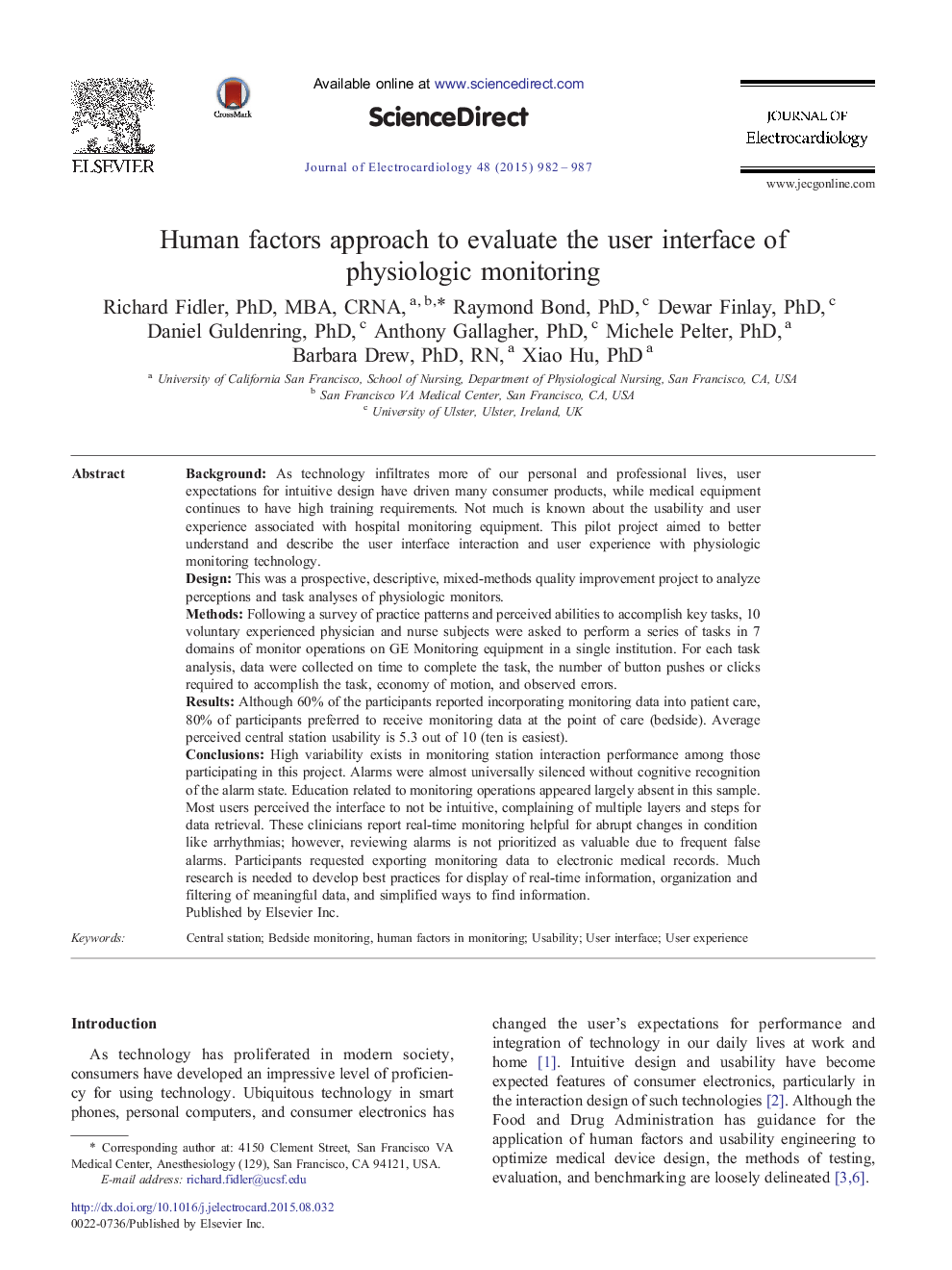| کد مقاله | کد نشریه | سال انتشار | مقاله انگلیسی | نسخه تمام متن |
|---|---|---|---|---|
| 2967374 | 1178840 | 2015 | 6 صفحه PDF | دانلود رایگان |
BackgroundAs technology infiltrates more of our personal and professional lives, user expectations for intuitive design have driven many consumer products, while medical equipment continues to have high training requirements. Not much is known about the usability and user experience associated with hospital monitoring equipment. This pilot project aimed to better understand and describe the user interface interaction and user experience with physiologic monitoring technology.DesignThis was a prospective, descriptive, mixed-methods quality improvement project to analyze perceptions and task analyses of physiologic monitors.MethodsFollowing a survey of practice patterns and perceived abilities to accomplish key tasks, 10 voluntary experienced physician and nurse subjects were asked to perform a series of tasks in 7 domains of monitor operations on GE Monitoring equipment in a single institution. For each task analysis, data were collected on time to complete the task, the number of button pushes or clicks required to accomplish the task, economy of motion, and observed errors.ResultsAlthough 60% of the participants reported incorporating monitoring data into patient care, 80% of participants preferred to receive monitoring data at the point of care (bedside). Average perceived central station usability is 5.3 out of 10 (ten is easiest).ConclusionsHigh variability exists in monitoring station interaction performance among those participating in this project. Alarms were almost universally silenced without cognitive recognition of the alarm state. Education related to monitoring operations appeared largely absent in this sample. Most users perceived the interface to not be intuitive, complaining of multiple layers and steps for data retrieval. These clinicians report real-time monitoring helpful for abrupt changes in condition like arrhythmias; however, reviewing alarms is not prioritized as valuable due to frequent false alarms. Participants requested exporting monitoring data to electronic medical records. Much research is needed to develop best practices for display of real-time information, organization and filtering of meaningful data, and simplified ways to find information.
Journal: Journal of Electrocardiology - Volume 48, Issue 6, November–December 2015, Pages 982–987
